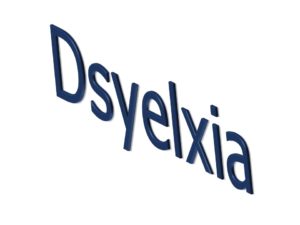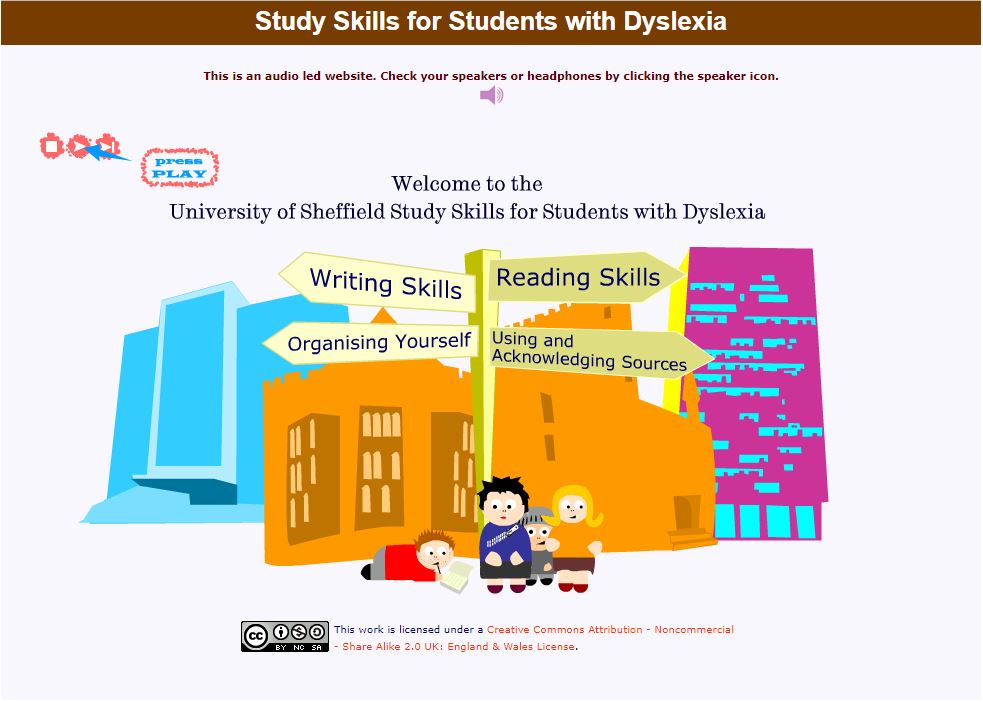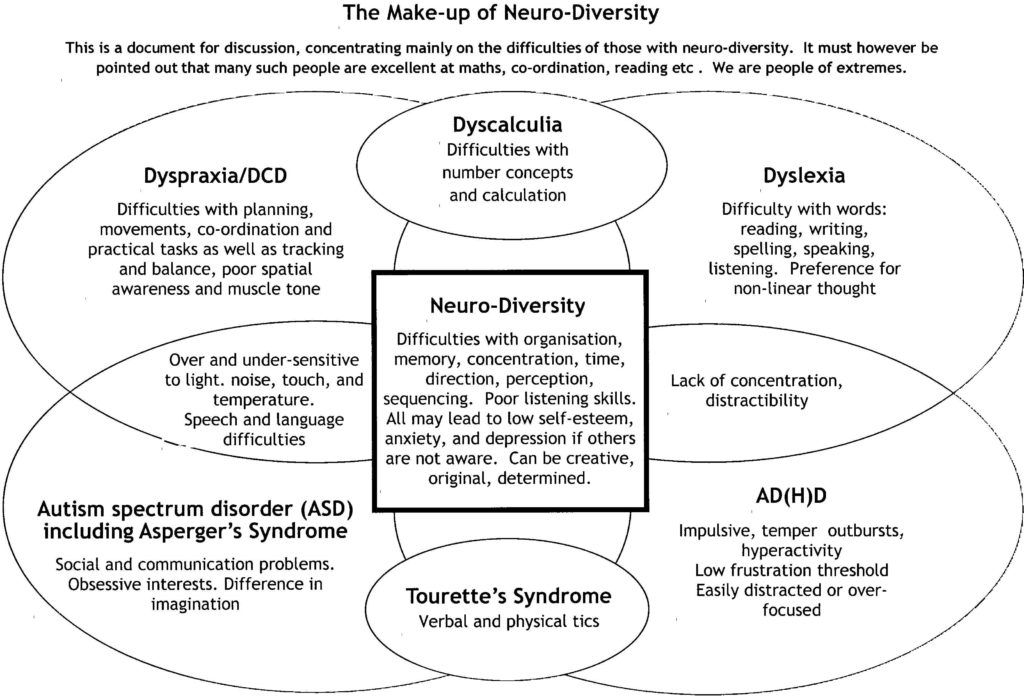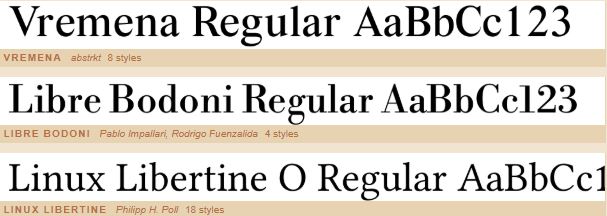Studying with dyslexia? It’s not impossible (note the double negative)!
It’s not impossible (note the double negative)!
 I felt compelled to write about this topic. Not only did I work in dyslexia support for many years, but I also strongly assume that creativity and neurodiversity are closely related and recognise that we have countless students in the creative faculty I work in.
I felt compelled to write about this topic. Not only did I work in dyslexia support for many years, but I also strongly assume that creativity and neurodiversity are closely related and recognise that we have countless students in the creative faculty I work in.
A source I have come to rely on in the past is www.brainhe.com, which highlights resources for staff and student in Higher Education. I worked with the creator of the website, David Pollak, and can highly recommend his excellent book: Dyslexia, The Self and Higher Education: Learning Life Histories of Students Identified as Dyslexic (still available second hand on abebooks.co.uk). He very consciously addresses the call for “nothing about us without us” from the disability movement. The relevance in my daily work makes me want to go back to reading it.
First of all, the term ‘neurodiversity’ comes up, but what is it actually? It is obviously connected to the brain; have a look at the visual explanation for it:
(Image credit: Brain HE website)
Note the “we” in the top line. It clearly has been produced by an ‘insider’ and shows such a variety of issues people are struggling with in their daily lives. It also visualises the possibility that a person might experience more than one condition, for example, dyslexia with dyspraxia or dyslexia with ADHD.
The BrainHE website is now hosted by Neurohow. I find this website even better. I like its modern feel: inviting, easy to navigate and to the point. Not to mention full of useful free resources! Everybody could benefit from them. I always think that good study skills techniques, & strategies (I prefer ‘learning development’ nowadays) for dyslexic students have a universal appeal and can benefit students from diverse backgrounds.
Still, let me come back to dyslexia since the majority of identified specific learning differences nowadays fall into this category. Are you unclear about your ways of perceiving the world? Start by trying out this short questionnaire.
Storytelling
 You might have noticed that I am fond of storytelling, especially applied to academic settings (see my recent blog post). It can be a quite therapeutic way of telling others about yourself. This brings me back to the author I mentioned earlier. He interviewed students with dyslexia and wrote up their life stories in his book (what he calls ‘learning life histories’). To begin with, there is a story behind everybody’s learning path to understand where he or she comes from.
You might have noticed that I am fond of storytelling, especially applied to academic settings (see my recent blog post). It can be a quite therapeutic way of telling others about yourself. This brings me back to the author I mentioned earlier. He interviewed students with dyslexia and wrote up their life stories in his book (what he calls ‘learning life histories’). To begin with, there is a story behind everybody’s learning path to understand where he or she comes from.
Read this example from a prolific American blogger who set herself a 100 day challenge of looking at 100 issues in 100 days. Dip into it! Even though she is at a very high academic level, doing her PhD, many readers can take some insightful points away and see themselves in her stories. But also, have you noticed? She is doing a PhD! A true feel good story: the sky is the limit.
To sum up, the points mentioned in her massive list, you will have to think about how you learn best. Have you thought about:
- your resilience
- your favourite working environment
- the best way of contacting your lecturers/ support staff
- the advantages of being in a study group
- what your strengths are and how to best use them
- setting milestones or mini-goals
- looking at the (her words!) ‘shitty’ first draft
- a dissertation roadmap
- or some of the many others found here?
Nowadays many students write about their own experiences in blogs. Others read them, of course, for entertainment or information gathering (you are reading one right now).
Multisensory works best

Sheffield University has produced an interactive website for students with dyslexia (please note you might have to use firefox to enjoy all the features of the website because Adobe Flash will be discontinued in December 2019). This website demonstrates that multisensory, sometimes called multimodal, engagement with resources offers an array of different ways to access study materials or learning tools. It is entertaining as well, and therefore particularly suitable for those who benefit from playful learning or have difficulty maintaining attention for long periods.
But it’s sooo much to think about…
Reading – writing – organisation – what’s worst for you? It is all down to the individual, however. Research has shown that the following areas are all affected to some degree:
- verbal comprehension
- perceptual organisation
- working memory
- processing speed.
You will have good days and bad days, depending on the task, motivation, audience, and type of resources (do you really prefer e-books?). You basically have to analyse what keeps you from performing at your best in a specific context. Reading about other students’ experiences could make you feel better about yourself. Why did you have negative experiences about something in the past? Did a teacher put you down? Were you criticised in public? Did someone put you in the spotlight for reading too slowly or not read out loud?
“How to help an adult with dyslexia” is written from the perspective of a teacher, parent or anyone working with people who might not yet be diagnosed with dyslexia . Whether you are in insider or outsider, using supportive and inclusive teaching methods are of the highest importance. This again links with the question, why not use universal design (UL) for everybody?
Fonts – one size does not fit all
An age-old interest of mine is to look into fonts. Clearly, some are more ‘readable’ than others. Do you know the difference between serif and sans serif fonts?
Now, look at these serif fonts (from the open source Font Library):
versus these sans serif fonts:
For a long time, Comic Sans was recommended in the literature as one of the easiest to read fonts. However, people got a bit fed up with this omnipresent font. Here are options or later developed alternatives. I do quite like Corbel and Frutiger and deem them very accessible. Make up your own minds here.
(Editor’s note: There is some consensus that of the fonts that look ‘professional’ and are easily available on multiple computing platforms, Arial is one of the most accessible for printed works, while Verdana with its large letter loops is widely recognised to be the most easily read on screens.)
Which font is best for you? Dyslexia specialists have debated this for a while now. The Dysle+iefont and British Dyslexia Association websites offer sound advice on the topic.
The following font shows what it could be like to read with dyslexia. A graphic designer might argue that the following example is fancy, but is it readable?
(Editor’s note: This font was designed by Daniel Britton, a graphic designer with dyslexia, to emulate the experience of dyslexia for those without the condition. Read the full article from Futurism here or visit Daniel’s website.)

There we go – be brave, creative, play to your strengths. You have hopefully already chosen a subject that suits you best. Don’t give up without having explored and considered all angles of support, opportunities, perspectives and ways forward to enhance your learning at university.
Last but not least, there are thousands of role models out there, not only in the creative industries but also business and the sciences. I won’t mention anyone specific here, find your own!
Remember:









Fascinating publication. A comparison would be interesting, but as we know, every learner with dyslexia has a different profile. I really wish him well!
Thanks for the informative post.
Our very own University of Portsmouth Graphic Design student Sam Barclay had a fantastic project titled: I Wonder What It’s Like To Be Dyslexic? Please visit (and support!)
http://www.sambarclay.co.uk/
https://creativespace.cci.port.ac.uk/2013/11/ba-hons-graphics-design-graduate-sam-barclay-raises-money-to-publish-book/